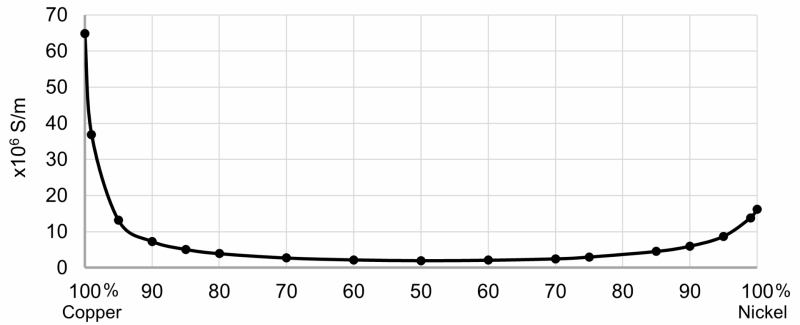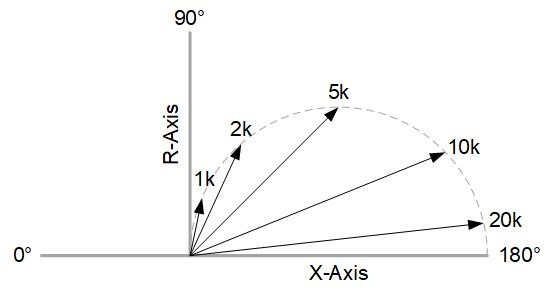-
Posts
584 -
Joined
-
Last visited
Content Type
Forums
Detector Prospector Home
Detector Database
Downloads
Everything posted by Geotech
-
On the V3, it was written in C++. It would be a difficult challenge for someone to take on that code other than the guy who wrote it, who now works for FTP. Also, the V3 was not a depth demon and had some issues, notably with ground tracking. And recovery speed was average. It would need a complete hardware re-design and a lot of software overhaul. Apex might be a better starting point. On Minelab, the rumor I've heard is that the Equinox 1000 is getting close. It is not an enhanced Eq800 but has a new mechanicals with a larger pod.
-

Legend Internals, Circuit Board, Processor, Etc.
Geotech replied to phrunt's topic in Nokta / Makro Legend Forum
Hard to say with just photos. I'm not seeing any signs of hardware demods so it appears to be direct sampling. That's slightly surprising, but maybe NM cracked that nut with the Simplex, I don't know. -

Legend Internals, Circuit Board, Processor, Etc.
Geotech replied to phrunt's topic in Nokta / Makro Legend Forum
32b Cortex processors have plenty of horsepower for detectors. M4 cores (as apparently in the Legend) have a hardware multiply so they even have some DSP muscle. Almost all my designs use STM32 micros. The F-Pulse/TekPoint has an STM32L072, the walk-thru has an STM32L496, and another design has an STM32F767. Have you seen anything with 5.2 LE audio? I think Qualcomm has a chip that supports it and I've seen one set of 5.2-LE earbuds, but nothing else. No off-the-shelf headphones or transmitters. The companies I'm watching in particular are ST-Micro and Nordic, because working with Qualcomm is a royal pain. We also tried Feasycom and found them to be very unresponsive. -
No, lower coil resistance won't help (and that would require thicker wire, not thinner). PI pinpointers are not designed to go deep and are more concerned with battery life so the pulse timing would likely need to be changed, as would the power supply that drives the coil. And because raw depth is not critical the RX circuitry is probably pretty skimpy and would need redesigning. In short, you need a different PI circuit. This circuit isn't going to do that.
-
Selling into big-box stores is a challenge. It's easy to think that, say, a Simplex could move into that market and kill our sales but there is a lot more to it than just the detector. You need a business infrastructure that can deal with the demands of on-line & big-box venues. For example, FTP can receive an order for 1000 detectors in the morning and build them all from scratch and ship them by that afternoon. Can't ship same day? Then the order is canceled. And when Stuff-Mart wants to return 5000 unsold detectors that are still brand new but the boxes are beat up you have to accommodate that if you ever want to do business with them again. White's tried to do this in their waning years but was unable. Garrett does pretty well at the game, Minelab less so. It really demands a large domestic presence and having the factories and warehousing here is a huge benefit.
-

Conductive Soil Subtraction And Addition...what Is It?
Geotech replied to Jeff McClendon's topic in XP Deus II Forum
When you subtract the frequencies for salt cancel you end up with a composite signal that is used for raw detection. Yes, this signal will be less sensitive to target near the salt notch. -
The CZX was not an updated CZ, it was a completely new design. It was specifically designed for prospecting and that's where it failed. I tried to get people to shift the project to coin/relic/beach but was unsuccessful. FTP does contract manufacturing at the Juarez facility but metal detectors are still the primary business.
-

Conductive Soil Subtraction And Addition...what Is It?
Geotech replied to Jeff McClendon's topic in XP Deus II Forum
No, it's also used for target detection & ID. -
From his comment I'd say Luis wasn't involved in the test, he only posted it. I think this was a recent outing by Alexandre to evaluate some design changes. I have no info on whether the AQ will get back to production; my vote is 'no' unless the pod is redesigned. The AQ is a really good design (circuit-wise) and should be able to beat the new MF designs in depth. I agree that the iron masking works well with isolated targets but in heavy iron it struggles. I hunted around fire pits on an Oregon beach and the cheeps and chirps that get through the audio make it a real chore to use. In fairness, many VLFs tend to do the same. It's a shame this was pitched as "discrimination" or "iron ID" or "tone ID" etc etc. I wish we had seriously undersold this feature and let people figure out its value. It is useful in some situations.
-

Conductive Soil Subtraction And Addition...what Is It?
Geotech replied to Jeff McClendon's topic in XP Deus II Forum
Wind a coil of wire and then "short" it with a resistor. This allows you to accurately make any tau you want. For salt you want a really low tau which allows for a fairly high R. So start with a small gauge wire, something small enough it is not detected alone, maybe 30awg. I would start with 5-6 turns @ 3-4" diameter. Then use a pot as the R-element and adjust the pot until you get the tau you want. Measure the pot, replace with a fixed resistor. If you don't know the tau you're shooting for then make a guess and wave in front of the detector (assuming MF with salt notch enabled). When you get it right the detector should have no response. BTW, the pot/resistor needs to be mounted well away from the coil. Extend the coil wires 12" or so down a handle and put them at the end of the handle. Make sure the wires down the handle are twisted pair. -

Conductive Soil Subtraction And Addition...what Is It?
Geotech replied to Jeff McClendon's topic in XP Deus II Forum
I have no idea. If it were my design then only beach modes would do salt subtraction by default, although I might include the option in other modes as highly alkaline soil can also be a problem. Maybe that's what Deus 2 is doing. I may get the chance to borrow one, if I do then I'll make a salt wand for it and test it. -

Conductive Soil Subtraction And Addition...what Is It?
Geotech replied to Jeff McClendon's topic in XP Deus II Forum
Frequency subtraction is how salt notching works in an MF design. Salt has a weaker response at low frequency and stronger at high. So if you subtract them in the right proportions then salt disappears. In older MF detectors this was done all the time. The V3 gave the option of turning it off because it also notches out really small gold. I assume newer models only subtract salt in the beach modes. If there is no salt then it's also possible to add frequency components which (I think) will improve the resistive response across the board, which is the signal used for determining the presence of a target. -

White’s Wireless Spectrasound Headphones
Geotech replied to locator's topic in White's Metal Detectors
No, by the time the headphones were released the Cypress module we used was heading toward end-of-life. Plus, that module wasn't a good choice for making a plug-in adapter. The intent was to design a whole new wireless system but that never happened. -

Which Frequency Is Running In Each Mode?
Geotech replied to vive equinox's topic in Minelab Equinox Forum
The Gemini (and TW6) is primarily a utility locator although it does get sold to occasional treasure hunters (the TM808 is a better choice for that). The best way to use the Gemini is to split it apart, connect the TX to the line or pipe, and then use the RX box to trace it out. At my previous home I traced the power line out to the well house, about 150 feet. In utility locating there are 2 popular frequencies used: 8.2kHz and 82kHz. 82kHz is the better choice for tracing metal pipes because it does a better job of jumping across the poorly conductive joints. Probably why the TW6 runs at 82kHz, and the Gemini is just a copy of the TW6. As a unified 2-box detector the Gemini is not especially sensitive. I know that it failed my 24" silver cache test, but so did the TM808 and everything else I tried. -
Nice post Steve. US classic coinage provides an excellent example. We have 4 coins (dime, quarter, half, dollar) that are all the exact same alloy: 90% silver, 10% copper. Yet have different responses due to size & thickness. And a nickel that is larger and thicker than a dime yet has a much lower phase response, showing that metal type can also play a strong role. But, yeah, any alloy can end up just about anywhere. I'm reminded of the big aluminum token I once found that had the exact same TID as a silver dollar.
-
Phrunt, that post is probably less sarcastic than you think. For 2022, if I'm lucky then my walk-thru detector will get released. I don't know of anything else even close, and I can easily see the walk-thru getting pushed to 2023. On a good note, I'm told the 12" coil will be hitting Amazon soon. "Soon" is a broadly relative term here, but I think it meant this year.
-

Which Frequency Is Running In Each Mode?
Geotech replied to vive equinox's topic in Minelab Equinox Forum
The use of the term "-3dB frequency" is misleading if you know what that term usually means in electronics. It's not a -3db frequency at all, rather it's just the frequency where you get a maximum R-response. A picture is worth 900 words so... Suppose we're talking about a copper coin of some kind. At 1kHz it has a small response magnitude at a phase just past 90°. Increase the frequency to 2kHz and the magnitude and phase both increase. Again for 5kHz, 10kHz, and 20kHz. The magnitude and phase always increase with increasing frequency. Seems like the target will be easier to detect at 20kHz, that's a big response. Except... we don't look at the target magnitude. Instead, we only look at the R-response. The reason is that ground is phase-adjusted to lie along the 0° axis which means the X-response may have a lot of ground signal in it while the R-response has none. This means that only the R-channel is clean and useful for initial target indication. (When you listen to a threshold-based detector you are listening to the R-channel. If you hear ground noise then it's because the ground phase isn't properly adjusted and some of it is getting into the R-channel.) In this example the peak R-response is at 5kHz. This also corresponds to one-half of an eventual maximum X-response the target could possibly generate. Payne calls it the half-power/-3dB frequency which I don't care for because it doesn't correspond with the traditional use of those terms. Some people call it the resonant frequency which is even worse, there is no resonance at all. It's just a result of only using one-half of quadrature demodulation. In any case, it is true that (everything else being equal) a 5kHz detector will detect this particular coin better than at other frequencies.



